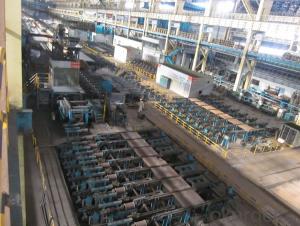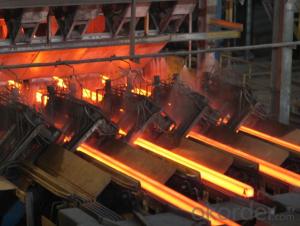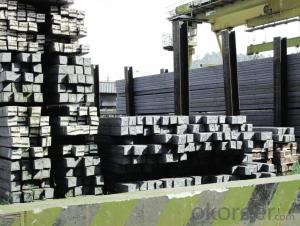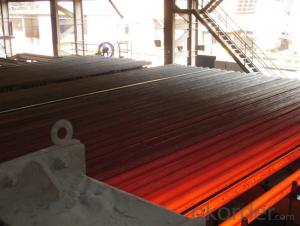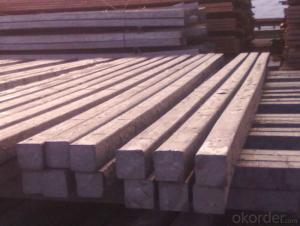Hot Rolled Steel Billet 3SP Standard 115mm
- Loading Port:
- Shanghai
- Payment Terms:
- TT OR LC
- Min Order Qty:
- 100 m.t.
- Supply Capability:
- 10000 m.t./month
OKorder Service Pledge
OKorder Financial Service
You Might Also Like
Structure of Hot Rolled Steel Billet 3SP Standard 115mm

Description of Hot Rolled Steel Billet 3SP Standard 115mm
Prepainted Rolled steel Coil is a kind of coated steel coil/sheet. With the cold rolled steel of different strength and thickness as substrate, it is produced through applying Al-Zn coat on both faces by hot dip process. In its coating, Al accounts for about 55%, Si 1.6%, while the remaining is Zn. Aluminum zinc coils enjoys both the physical protective feature and durability of Al and the electrochemical protective property of Zn. And its surface has bright silver color and regular embossed-like figure, which are highly decorative. RAL Scale Z35 Prepainted Rolled Steel Coil for Construction Roofing

Main Feature of Hot Rolled Steel Billet 3SP Standard 115mm
1.Corrosion resistance: It mainly depends on the zinc protection. When the zinc being worn,
2. Heat resistance: steel sheet has excellent heat resistance, can withstand high temperatures over 300 centigrade, and is similar with aluminized steel high temperature oxidation resistance. It often used in chimney pipes, ovens, fluorescent lighting device and the device cover.
3. Heat reflective: Galvanized steel plate heat-reflective high rate is twice as galvanized steel, often used to make insulation materials. RAL Scale Z35 Prepainted Rolled Steel Coil for Construction Roofing
Applications of Hot Rolled Steel Billet 3SP Standard 115mm
1. Construction and building: roofing; ventilating duct; handrail; partition panel;etc.
2. Electric appliance: refrigerator; washing machine; refrigerator; DVD;etc.
3.Transportation: oil tank; gas tank;road sign; etc.
4.Agriculture constructions :barn; etc.RAL Scale Z35 Prepainted Rolled Steel Coil for Construction Roofing
5.Others:vending machine; game machine; auto parts spare parts etc.
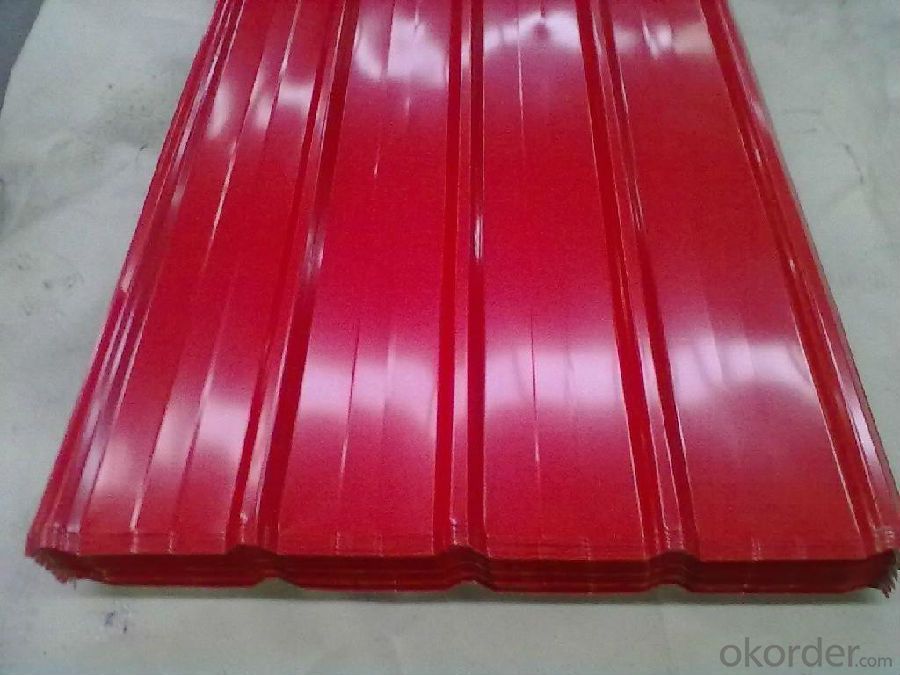
Specifications of Hot Rolled Steel Billet 3SP Standard 115mm
Product | Hot Rolled Steel Billet 3SP Standard 115mm |
Material Grade | SGCC / SGCH / DX51D+AZ, etc |
Thickness | 0.5-3.0mm |
Width | 700-1500mm |
Tolerance | Thickness: +/-0.02mm , Width:+/-2mm |
Zinc-coating | AZ30-150g/m2 |
Technique | Raw material: Hot rolled steel coil --> Cold rolled_>hot dipped galvalume |
Surface | Dried, Chromated, Unoiled,RAL Scale Z35 Prepainted Rolled Steel Coil for Construction Roofing |
Spangle | Regular spangle , small spangle, zero spangle |
ID | 508MM 610MM |
Coil weight | 25MT max |
Export package | Cardboard inner sleeves, Waterproof paper, galvanized steel covered and steel strip packed |
FAQ of Hot Rolled Steel Billet 3SP Standard 115mm
We have organized several common questions for our clients,may help you sincerely:
1. What is the minimum order quantity ?
Our MOQ is 100 mt for each size each specification. Usually we can offer discount if can buy large QTY once. RAL Scale Z35 Prepainted Rolled Steel Coil for Construction Roofing
2. How long can we receive the product after ordering?
Our general delivery time is 30 days after confirmation, but so some special orders, we have offer special delivery time
3. How to guarantee the quality of the products?
We have established the international advanced quality management system ,every link from raw material to final product we have strict quality test;We resolutely put an end to unqualified products flowing into the market. At the same time, we will provide necessary follow-up service assurance.
4. What is the payment?
We accept T/T, L/C
- Q:What are the main factors affecting the microstructure of steel billets?
- The main factors affecting the microstructure of steel billets include the composition of the steel, the cooling rate during solidification, the presence of impurities or alloying elements, and the heat treatment processes applied.
- Q:How are steel billets straightened after rolling or forging?
- After the rolling or forging process, steel billets may have irregularities or bends. To straighten them, various methods can be employed depending on the size and shape of the billets. One common method is known as rotary straightening. In this process, the billets are passed through a series of rotating rolls or wheels that exert pressure on the material, gradually straightening it out. The rolls are usually positioned at different angles to ensure an even distribution of force across the billet. This method is often used for smaller billets or those with slight bends. For larger and thicker billets, hydraulic straightening is often employed. Hydraulic presses or jacks are used to apply controlled pressure at specific points along the length of the billet. By adjusting the pressure at different points, the billet is gradually straightened. This method is more suitable for heavier and more severely bent billets. In some cases, heat can also be used to aid in the straightening process. Heat straightening involves heating the bent section of the billet to a specific temperature and then applying pressure to straighten it while it is still hot. This method is particularly effective for billets with significant bends or twists. It is important to note that the straightening process requires careful control and monitoring to prevent over-straightening or excessive stress on the material. Skilled operators and advanced equipment are necessary to ensure the billets are straightened effectively and within the desired tolerances.
- Q:What are the different types of steel billet extrusion processes?
- The manufacturing industry utilizes various steel billet extrusion processes, each with its own distinct characteristics. These processes employ high pressure to shape solid steel billets into desired profiles or shapes. 1. The most frequently employed method is direct extrusion. This process involves placing the billet within a container, commonly referred to as a "container" or "container die." The container possesses a small opening, known as a "die," through which the billet is propelled using a ram or piston. The billet is then forced through the die, resulting in the formation of the desired shape. 2. Another technique, indirect extrusion, involves a stationary container die. The billet is pushed through the die using a punch or ram. The billet is positioned inside a hollow chamber called a "container" or "container die," featuring a smaller opening at one end. Pressure is applied to the billet using the punch, compelling it to flow through the die and adopt the desired profile. 3. Impact extrusion shares similarities with direct extrusion but incorporates a specially designed punch. This punch strikes the billet with a significant impact force, causing it to flow and take on the shape of the die. Impact extrusion is frequently utilized to produce small, intricate shapes with thin walls. 4. Hydrostatic extrusion employs a sealed chamber filled with a pressurized fluid, typically oil or water, in which the billet is placed. The fluid pressure is utilized to force the billet to flow through the die and acquire the desired shape. Hydrostatic extrusion is commonly employed for the production of complex shapes with high precision. 5. Cold extrusion is performed at room temperature without the need for heating the steel billet. This method is often used to produce small, intricate parts with high dimensional accuracy. It offers a cost-effective approach, enabling the production of parts with excellent surface finish. The selection of a specific steel billet extrusion process depends on various factors, including the desired shape, size, material properties, and production requirements. Each process has its own advantages and limitations.
- Q:How are steel billets used in the production of transmission towers?
- Steel billets are used in the production of transmission towers as the raw material for manufacturing tower sections. These billets are cut, shaped, and welded to create the structural components of the towers, ensuring strength, stability, and durability in supporting electrical transmission lines.
- Q:How are steel billets used in the manufacturing of furniture and fixtures?
- Steel billets are an essential component in the manufacturing of furniture and fixtures due to their versatility and durability. These billets, which are semi-finished metal products, serve as the raw material for creating various components of furniture and fixtures. One common use of steel billets in furniture manufacturing is for creating frames and structural supports. The billets are shaped and cut into specific dimensions to form the framework of chairs, tables, and other pieces of furniture. The strength and rigidity of steel make it a preferred choice for ensuring the stability and longevity of these products. In addition to frames, steel billets are used for producing hardware components of furniture and fixtures. This includes hinges, locks, drawer slides, and other mechanisms that require strength and precision. By using steel billets, manufacturers can ensure that these components can withstand the wear and tear associated with daily use. Steel billets are also utilized in the production of decorative elements in furniture and fixtures. They can be molded, bent, or welded into various shapes and designs to add aesthetic appeal to the final product. These decorative elements may include trimmings, accents, or ornamental details that enhance the overall appearance of furniture and fixtures. Furthermore, steel billets are often used in the manufacturing of fixtures such as shelving units, display racks, and storage systems. The durability and load-bearing capacity of steel make it an ideal material for constructing these items, ensuring that they can withstand heavy loads and provide long-term support. In summary, steel billets play a crucial role in the manufacturing of furniture and fixtures. They are used to create frames, hardware components, decorative elements, and various types of fixtures. Their strength, durability, and versatility make them an essential raw material for producing high-quality and long-lasting furniture and fixtures.
- Q:After processing to the color coating board, is there a fare increase of 1000?The price of galvanized coil is about +350 per ton of cold-rolled steel at present What about the cost of billet to cold rolling?What is the final cost of making the color coated sheet? How do you figure that?
- The cost of billet to cold rolling is about 1000Galvanized to color coated sheet costs vary greatly, generally around 300, a high of 500
- Q:How is the quality of steel billets ensured during production?
- To ensure the quality of steel billets, various measures are implemented during the production process. Here are several key factors that contribute to this: 1. Raw materials selection: High-quality raw materials like iron ore, coal, and scrap metal are carefully chosen for the production of steel billets. These materials undergo rigorous testing to ensure they meet the necessary specifications and standards. 2. Melting and refining: The raw materials are melted and refined to produce the steel billets. This stage utilizes advanced technologies and equipment to control temperature and chemical composition, ensuring consistency and uniformity in the final product. 3. Continuous casting: The molten steel is poured into a continuous casting machine, where it solidifies into billet form. This process allows for precise control over cooling, resulting in billets with uniform dimensions and internal structure. 4. In-line inspection: Modern production facilities incorporate in-line inspection systems that continuously monitor and analyze the quality of the steel billets. Techniques like laser measurement, ultrasonic testing, and magnetic particle inspection are used to detect defects or abnormalities. 5. Heat treatment: Steel billets may undergo heat treatment processes like annealing or quenching to enhance their mechanical properties and eliminate residual stresses. These treatments are carefully controlled to achieve desired results and improve overall quality. 6. Testing and quality control: Comprehensive testing is conducted on the steel billets to ensure they meet required standards. Mechanical and chemical tests, such as tensile strength, hardness, and chemical composition analysis, are performed. Non-destructive testing methods like ultrasonic testing and X-ray inspection are used to detect internal defects or flaws. 7. Traceability and documentation: Detailed documentation is maintained throughout the production process to track each batch of steel billets. This includes information on the raw materials used and final testing results, ensuring traceability and providing a record for quality control purposes. By implementing these measures and following strict quality control procedures, steel manufacturers can ensure that the produced steel billets meet required standards and are suitable for further processing and use in various industries.
- Q:What are the common surface defects in steel billets?
- Some common surface defects that can be found in steel billets include: 1. Scale: This is a thin layer of oxide that forms on the surface of the billet during the hot rolling process. It can appear as a flaky or rough texture and is caused by the reaction of the steel with oxygen in the air. 2. Cracks: Cracks can occur due to a variety of reasons, such as improper cooling or excessive stresses during the manufacturing process. These cracks can be either longitudinal or transverse and can greatly affect the structural integrity of the billet. 3. Pitting: Pitting refers to small depressions or cavities that can form on the surface of the billet. It is often caused by localized corrosion or reactions with impurities in the steel. 4. Lamination: Lamination defects occur when there are layers or sheets of non-metallic inclusions within the steel billet. These inclusions can weaken the billet and affect its mechanical properties. 5. Surface porosity: Surface porosity refers to the presence of small voids or bubbles on the surface of the billet. It can be caused by gas entrapment during the solidification process or by improper casting techniques. 6. Inclusions: Inclusions are non-metallic substances that can be present in the steel billet. These can include oxides, sulfides, or other impurities, and can affect the billet's mechanical properties. It is important to identify and address these surface defects in steel billets as they can impact the quality and performance of the final product. Various inspection techniques, such as visual inspection, ultrasonic testing, or magnetic particle testing, can be employed to detect and eliminate these defects to ensure the production of high-quality steel products.
- Q:What are the challenges in welding steel billets?
- Welding steel billets presents various obstacles that need to be addressed. One of the primary hurdles involves achieving proper heat distribution throughout the welding process. Given their considerable size and thickness, steel billets make it difficult to evenly distribute heat across the material. Consequently, this can lead to inconsistencies in the weld, resulting in weak areas or even joint failure. Another challenge revolves around the possibility of distortion and warping during the welding process. The application of heat to the steel causes the material to expand and contract, leading to undesired changes in shape and dimensions. This issue becomes particularly problematic when dealing with larger or more intricate structures, as maintaining the desired shape and dimensions becomes crucial. Furthermore, steel billets may contain impurities and contaminants that can impact the weld's quality. These impurities, such as sulfur, phosphorus, and other elements, can trigger the formation of brittle zones or other defects in the weld. To mitigate these challenges, it is necessary to adequately clean and prepare the billet surface, as well as employ appropriate welding techniques and filler materials. Moreover, the high carbon content commonly found in steel billets makes them susceptible to cracking during the welding process. Carbon acts as a hardening agent in steel and can increase its vulnerability to cracking, particularly if proper preheating and post-weld heat treatment procedures are not followed. Essential measures include controlling the cooling rate and implementing stress-relieving techniques to prevent cracking and ensure weld integrity. Lastly, the sheer size and weight of steel billets can pose logistical challenges during welding. The handling and positioning of these heavy objects necessitate specialized equipment and skilled operators to guarantee safety and accuracy. Additionally, achieving precise alignment and fit-up becomes more complex with larger billets, demanding careful planning and execution. To summarize, welding steel billets involves overcoming challenges such as heat distribution, distortion and warping, impurities and contaminants, carbon-induced cracking, and logistical issues. Successfully navigating these obstacles requires expertise, appropriate equipment, and adherence to proper welding techniques and procedures.
- Q:How do steel billets contribute to the overall recyclability of a structure?
- The overall recyclability of a structure is greatly enhanced by steel billets, which play a vital role. These semi-finished steel products are created by melting iron ore and other raw materials in a blast furnace. Steel billets possess various characteristics that contribute to a structure's recyclability, thanks to their composition and manufacturing process. Foremost, steel is one of the most recycled materials worldwide. Steel billets can be recycled endlessly without compromising their quality or integrity. Consequently, when a structure reaches the end of its lifespan, the steel components can be effortlessly dismantled, and the steel billets can be melted down to produce new steel products. This ability to recycle steel billets reduces the necessity for extracting and refining new iron ore, thereby conserving natural resources and minimizing the environmental impact associated with mining activities. Moreover, the recycling process of steel billets requires significantly less energy compared to producing steel from raw materials. Recycling steel billets consumes around 75% less energy than manufacturing steel from scratch. This energy efficiency not only reduces greenhouse gas emissions but also contributes to cost savings during the manufacturing process. By utilizing recycled steel billets in structure construction, we can mitigate the carbon footprint and promote sustainable practices within the construction industry. Additionally, the utilization of steel billets in structures provides practical advantages. Steel is renowned for its strength, durability, and resilience, making it an ideal material for constructing robust and long-lasting structures. By incorporating steel billets, structures can be designed to withstand various environmental conditions, such as earthquakes and hurricanes, guaranteeing the safety and longevity of the building. This aspect of longevity is crucial in terms of recyclability since it allows the structure to fulfill its purpose for an extended period before being recycled. In conclusion, steel billets significantly contribute to a structure's overall recyclability. Their ability to be recycled endlessly, reduced energy consumption during the recycling process, and practical advantages like strength and durability make steel billets an exceptional choice for constructing sustainable and recyclable structures. By incorporating steel billets, we can foster a circular economy, conserve natural resources, reduce emissions, and create a more sustainable future for the construction industry.
1. Manufacturer Overview |
|
|---|---|
| Location | |
| Year Established | |
| Annual Output Value | |
| Main Markets | |
| Company Certifications | |
2. Manufacturer Certificates |
|
|---|---|
| a) Certification Name | |
| Range | |
| Reference | |
| Validity Period | |
3. Manufacturer Capability |
|
|---|---|
| a)Trade Capacity | |
| Nearest Port | |
| Export Percentage | |
| No.of Employees in Trade Department | |
| Language Spoken: | |
| b)Factory Information | |
| Factory Size: | |
| No. of Production Lines | |
| Contract Manufacturing | |
| Product Price Range | |
Send your message to us
Hot Rolled Steel Billet 3SP Standard 115mm
- Loading Port:
- Shanghai
- Payment Terms:
- TT OR LC
- Min Order Qty:
- 100 m.t.
- Supply Capability:
- 10000 m.t./month
OKorder Service Pledge
OKorder Financial Service
Similar products
New products
Hot products
Related keywords
